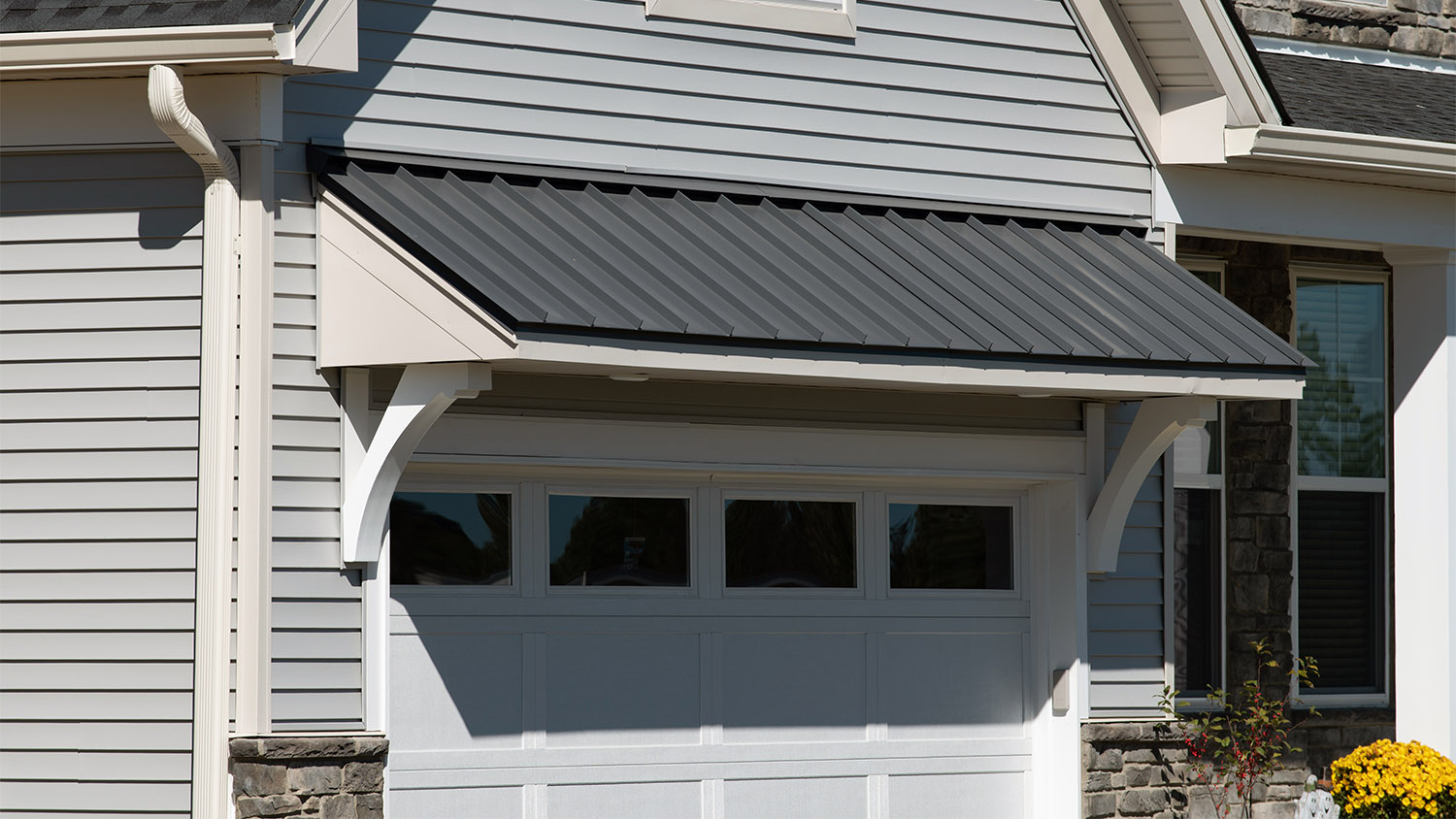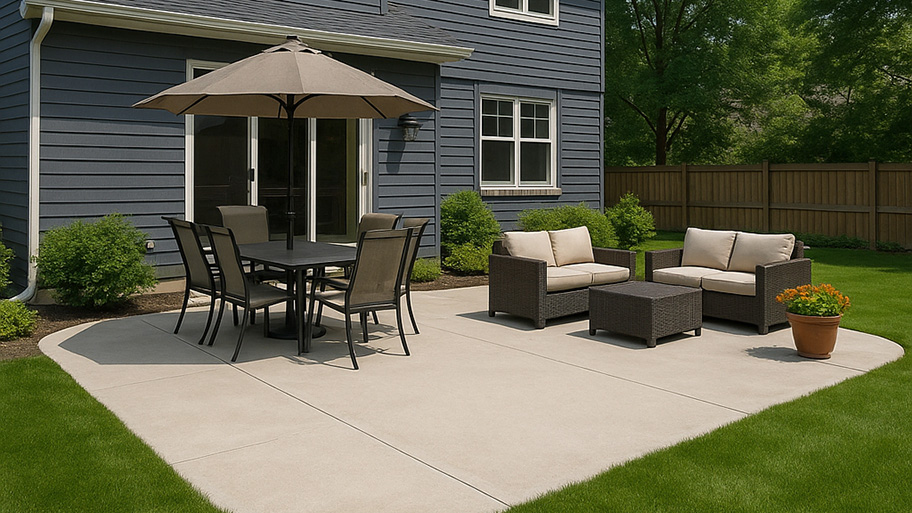
From patios and gazebos to full-on structures, your outdoor space is a blank slate. Learn how much it costs to build and furnish an outdoor room.
The average cost to remove a metal awning is $525, with most homeowners spending between$250 and $800. Factors include awning size, material, and labor rates.


Your removal costs will vary depending on the awning size, material, and accessibility.
Labor fees, which range from $40 to $100 per hour, and disposal charges are key cost drivers.
Removal of small awnings starts at $100, while large awnings can cost up to $700.
You may incur a charge of $20 to $100 for prep work or equipment rentals.
Awning removal pros charge between $40 and $100 per hour for labor, depending on your location and the job's complexity.
This article was created using automation technology and thoroughly fact-checked and edited by an Angi Editor in accordance with our AI policy.
The cost to remove a metal awning averages $525, with most ranging from $250 to $800. Prices depend on awning size, material, and labor rates in your area. Some projects may cost as little as $150 for small, accessible awnings, while complex removals can exceed $1,000. Most homeowners pay per awning removed.
Removing a metal awning is important because it can refresh your home’s exterior, address safety concerns, or prepare for future upgrades. Labor costs often run from $40 to $100 per hour, and some pros may charge per square foot if the awning is especially large.
When planning to remove a metal awning, several factors will shape your final costs. Let’s walk through each major consideration.
The type of metal awning you have makes a difference in the complexity of removal and the associated price. Fixed awnings, which are permanently attached, are less expensive to remove than retractable models with additional hardware or electrical components. Standard residential awnings cost less than custom or commercial-grade versions, while freestanding awnings may be simpler to dismantle than attached ones.
Awning dimensions play a major role in your project’s price. Larger awnings require more labor, time, and potentially specialized equipment. Removal costs often increase as both width and projection rise, especially for oversized models that require extra personnel or tall ladders.
| Awning Size | Dimensions | Average Removal Cost |
|---|---|---|
| Small | Up to 8 ft. wide | $100–$250 |
| Medium | 8 to 16 ft. wide | $250–$500 |
| Large | Over 16 ft. wide | $300–$700 |
The type of metal used in your awning affects removal costs due to weight, difficulty, and disposal needs. Aluminum awnings are lighter and easier to handle, while steel or reinforced metals may require more effort and higher disposal fees, especially if recycling is not available locally.
| Metal Material | Removal Cost Range | Disposal Considerations |
|---|---|---|
| Aluminum | $150–$400 | Often recycled, lower disposal fees |
| Steel | $200–$600 | Heavier, may cost more to haul or recycle |
Most homeowners hire a handyperson, general contractor, or awning specialist for the removal of metal awnings. Labor fees are charged either per awning or by the hour, with rates ranging from $40 to $100 per hour, depending on the region and the level of expertise. Urban areas or high-demand markets may see higher prices. Labor often includes removal, debris loading, and basic site cleanup, but not major repairs.
Minimum service charges may apply, especially for small jobs, and some pros offer flat rates for standard-sized awnings. Always confirm what’s included—some companies factor in disposal, while others bill it separately.
Preparation work can add to your bill. This may include clearing furniture, protecting landscaping, and ensuring safe access to the awning. Hard-to-reach locations, such as second-story installations, may require scaffolding or ladder rental, which can incur an additional cost of $20 to $100.
Tipping is not required, but it is appreciated for jobs that are particularly efficient or challenging. If you choose to tip, a standard amount is $10 to $20 per worker or up to 10% of the labor fee. Larger or more complex removals may warrant a higher tip, especially if the crew handles disposal and cleanup thoroughly.
Beyond the basics, a few extra elements can impact your total cost to remove a metal awning:
Cutting or demolishing rusted or oversized awnings (adds $50 to $200)
Post-removal cleanup and debris hauling (often $50 to $150)
Permit fees where required ($20 to $100, if applicable)
Repairs to siding, trim, or walls (patching, repainting: $100 to $500)
Structural or foundation repairs if damage is discovered
Disposal or recycling fees for metal ($20 to $75)
Several common add-ons may affect your total project cost:
Disposal or recycling of metal awning: $20 to $75
Siding or wall repair costs: $100 to $500
Painting or refinishing exposed areas: $50 to $300
Removal of attached lighting or electrical components: $100 to $300
Gutter or downspout removal/reinstallation: $50 to $150
New awning installation costs: $1,000 to $4,000 (if replacing)
Here are a few helpful ways to keep your metal awning removal project budget-friendly:
Get multiple quotes from local pros to compare rates and services.
Remove smaller, accessible awnings yourself if you have the right tools and help.
Schedule removal during off-peak seasons when demand is lower.
Prepare the area in advance by clearing obstacles and protecting landscaping.
Recycle the metal awning for scrap value to offset disposal fees.
Bundle awning removal with other exterior projects to reduce overall labor costs.
Avoid unnecessary add-ons or repairs unless they are essential for safety.
DIY awning removal costs less upfront, with expenses including tools, ladder rental ($20 to $50), and disposal fees ($20 to $75). However, you’ll need basic carpentry skills, safety gear, and at least one helper to manage heavy or awkward panels. DIY risks include injury from falling metal, electrical hazards with powered awnings, and potential damage to your home’s siding or structure.
Professional removal costs more but reduces risk. For large, heavy, or high-mounted awnings, hiring a local awning professional is the safest option.
Removing a metal awning involves structural, safety, and electrical considerations. Here’s why it’s best ot hire a pro for the job:
Pros know how to safely detach the awning from your home without causing damage.
Experienced pros have the specialized tools and equipment to handle heavy metal panels, brackets, and fasteners.
DIY removal can lead to property damage, injury, and costly repairs if the awning falls.
Professional removal keeps your home’s exterior intact and can boost curb appeal.
Move outdoor furniture, girls, and decor away from the work area.
Trim small trees, shrubs, or bushes that could get in the way of removal.
Lay down tarps or coverings to protect patios, decks, and landscaping.
Make sure pathways, gates, and side yards are accessible to the crew.
Be ready to discuss the details of your project with your pro, including the awning material, type, and location.
Decide whether you want a complete removal, partial removal, or awning replacement.
Ask about add-on services, like siding repair, gutter replacement, or painting, that can be bundled with your project.
Let your pro know of any concerns, such as drywall damage or landscaping issues, that could affect the removal.
Home is the most important place on earth, which is why Angi has helped more than 150 million homeowners transform their houses into homes they adore. To help homeowners with their next project, Angi provides readers with the most accurate cost data and upholds strict editorial standards. We extensively research project costs to develop the pricing data you see, so you can make the best decisions for you and your home. We rely on reputable sources, including the U.S. Bureau of Labor Statistics, academic journals, market studies, and interviews with industry experts—all to ensure our prices reflect real-world projects.
Want to help us improve our cost data? Send us a recent project quote to [email protected]. Quotes and personal information will not be shared publicly.
From average costs to expert advice, get all the answers you need to get your job done.

From patios and gazebos to full-on structures, your outdoor space is a blank slate. Learn how much it costs to build and furnish an outdoor room.

A deck skirt can improve the form and function of a deck. Find out what it could cost to install deck skirting in your backyard with this guide.

Learn the cost of a metal awning for your home. Discover the essentials of installation, materials, and labor, and explore ways to save on your project.

Enjoy your backyard—without some of the pesky elements that come with outdoor living. Check out some gazebo ideas to give your outdoor living space an upgrade.

If you’re preparing to build or replace a deck or porch, here are the first questions you should be asking a contractor before hiring them for the project.

Dreaming of a new outdoor entertaining space? Learn how a concrete patio can increase home value and pay for itself if you’re thinking of selling soon.